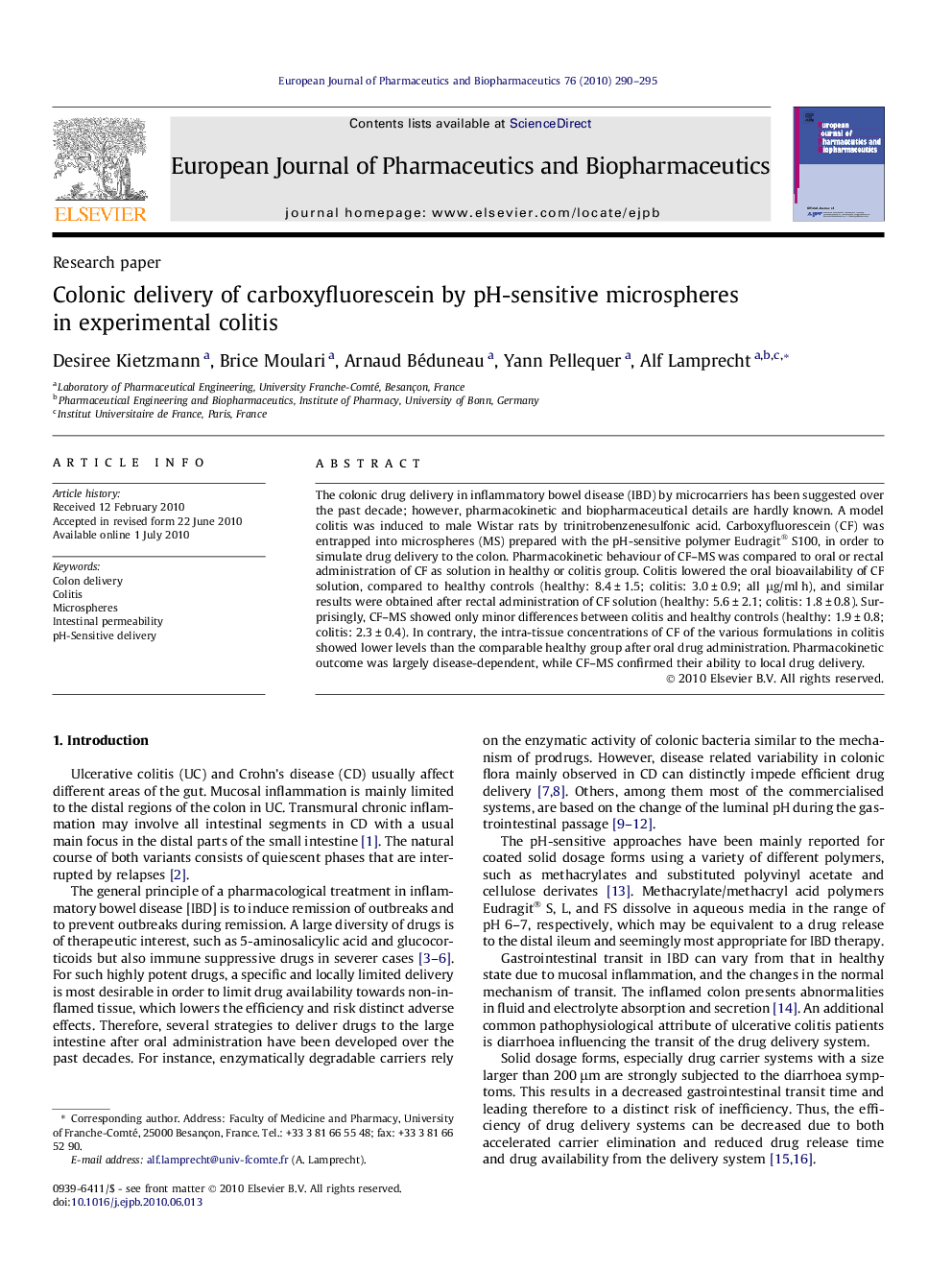| Article ID | Journal | Published Year | Pages | File Type |
|---|---|---|---|---|
| 2084325 | European Journal of Pharmaceutics and Biopharmaceutics | 2010 | 6 Pages |
The colonic drug delivery in inflammatory bowel disease (IBD) by microcarriers has been suggested over the past decade; however, pharmacokinetic and biopharmaceutical details are hardly known. A model colitis was induced to male Wistar rats by trinitrobenzenesulfonic acid. Carboxyfluorescein (CF) was entrapped into microspheres (MS) prepared with the pH-sensitive polymer Eudragit® S100, in order to simulate drug delivery to the colon. Pharmacokinetic behaviour of CF–MS was compared to oral or rectal administration of CF as solution in healthy or colitis group. Colitis lowered the oral bioavailability of CF solution, compared to healthy controls (healthy: 8.4 ± 1.5; colitis: 3.0 ± 0.9; all μg/ml h), and similar results were obtained after rectal administration of CF solution (healthy: 5.6 ± 2.1; colitis: 1.8 ± 0.8). Surprisingly, CF–MS showed only minor differences between colitis and healthy controls (healthy: 1.9 ± 0.8; colitis: 2.3 ± 0.4). In contrary, the intra-tissue concentrations of CF of the various formulations in colitis showed lower levels than the comparable healthy group after oral drug administration. Pharmacokinetic outcome was largely disease-dependent, while CF–MS confirmed their ability to local drug delivery.
Graphical abstractColonic delivery by pH-sensitive microspheres in experimental colitis does not increase local model compound concentrations in inflamed tissue.Figure optionsDownload full-size imageDownload as PowerPoint slide
